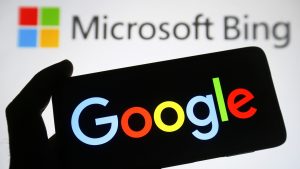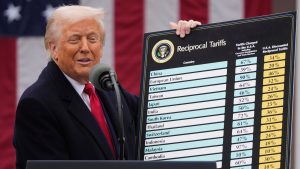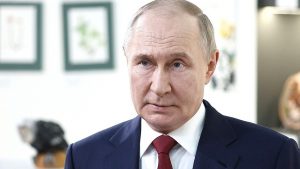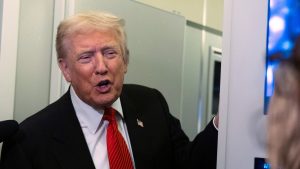Trump to host Zelenskyy in DC, eyes trilateral summit with Putin

President Donald Trump will host Ukrainian President Volodymyr Zelenskyy at the White House on Monday to discuss peace negotiations, following Trump’s summit with Russian President Vladimir Putin in Alaska on Friday. The U.S. and Ukrainian leaders held a phone conversation on Saturday, during which Trump briefed Zelenskyy on what was discussed in Alaska.
Peace agreement vs. ceasefire
Trump has already signaled that the U.S. is now in favor of a comprehensive peace agreement, something Putin has long advocated for, as opposed to Zelenskyy’s goal of first achieving a ceasefire that turns into a peace agreement.
On Saturday, Pauline Jones, a political science and research professor at the University of Michigan’s Center for Political Studies, told Straight Arrow News the distinction between a ceasefire and a peace agreement is an important one.
“[A ceasefire] precedes a peace agreement because it is necessary to stop the killing, allow humanitarian aid and most importantly, build trust between the warring parties so that they can negotiate a diplomatic end to the conflict,” Jones said.
Following his meeting with Putin, Trump spoke to Zelenskyy for roughly an hour on the phone. The two were then joined for an additional half-hour by European leaders.
“It was determined by all that the best way to end the horrific war between Russia and Ukraine is to go directly to a Peace Agreement, which would end the war, and not a mere Ceasefire Agreement, which often times do not hold up,” Trump wrote on Truth Social after the phone call.
Neither Zelenskyy nor the coalition of European leaders has spoken about a peace agreement versus a ceasefire.
Trump concluded his post by saying that Zelenskyy will be traveling to the White House on Monday, adding, “If all works out, we will then schedule a meeting with President Putin.”
This will be Zelenskyy’s first time visiting the White House since his now-infamous Oval Office meeting with Trump and Vice President JD Vance in February. The meeting abruptly ended after Trump and Vance accused Zelenskyy of “disrespecting” the U.S., being ungrateful and having zero leverage in the negotiations.
Alaska summit yields few details
Zelenskyy and Trump’s meeting will come three days after the U.S. president met with Putin in Alaska. The world leaders talked behind closed doors for three hours, reportedly discussing how to end the conflict. However, no concrete details were provided.
The two didn’t take any questions from reporters as their summit concluded, but did offer brief remarks. Putin said that they came to “agreements” about potential peace in Ukraine. Trump, meanwhile, called the meeting “extremely productive.”
“We had an extremely productive meeting, and many points were agreed to,” Trump said, without elaborating. “There are just a very few that are left. Some are not that significant. One is probably the most significant. But we have a very good chance of getting there. We didn’t get there, but we have a very good chance of getting there.”
Previously, Trump had alluded to a possible “land swap” as part of a lasting peace agreement between Russia and Ukraine. While Zelenskyy ruled out surrendering all land claimed by Russia, Western officials said he may be willing to freeze the front lines where they currently stand — effectively allowing Russia to retain control of areas it occupies.
On Saturday, Trump addressed the possibility while speaking to Fox News’ Sean Hannity.
“I think those are points that we negotiated, and those are points that we largely have agreed on. I think we’re pretty close to a deal,” Trump said. He then clarified, “Ukraine has to agree to it. Maybe they’ll say no.”
Saturday’s social media post was the first time Trump publicly supported the idea of a peace agreement. Jones described the shift as “crucial,” saying Putin’s reference to an “agreement” after his meeting with Trump “may have been to jettison the ceasefire in pursuit of a peace agreement.”
Additionally, Jones said, it signals a willingness by Trump to align the U.S. with Russia’s interests, as well as to concede the four Ukrainian territories Russia has partially occupied since the start of the war in 2022, including Donetsk, Luhansk, Kherson and Zaporizhzhia.
“It is an outcome that rewards Putin for his violation of Ukrainian sovereignty and the myriad of human rights violations that Russian forces have committed against Ukraine since Putin’s escalation of the war in February 2022,” Jones said.
On Saturday, Zelenskyy voiced his support for a trilateral meeting involving his counterparts in the U.S. and Russia, but stopped short of addressing the idea of a peace agreement over a ceasefire.
“We support President Trump’s proposal for a trilateral meeting between Ukraine, the USA, and Russia,” Zelenskyy wrote on X, adding, “Ukraine emphasizes that key issues can be discussed at the level of leaders, and a trilateral format is suitable for this.”
Zelenskyy also pushed for the inclusion of European leaders, writing, “It is important that Europeans are involved at every stage to ensure reliable security guarantees together with America.”
How are European leaders reacting?
Following their roughly 30-minute phone call with Trump and Zelenskyy, the leaders of France, Italy, Germany, Britain, Finland, Poland, the European Council and European Commission put out a joint statement calling for “ironclad security guarantees” that protect Ukraine’s “sovereignty and territorial integrity.”
“No limitations should be placed on Ukraine’s armed forces or on its cooperation with third countries,” the coalition wrote. “Russia cannot have a veto against Ukraine‘s pathway to EU and NATO.”
Jones said that Trump has already stymied Ukraine’s efforts to join NATO, describing it as “Putin’s most coveted outcome of the war.”
“This is most certainly also part of the peace agreement that Trump will put forward now,” Jones said. “Less certain is whether the agreement would include any security guarantees for Ukraine once the conflict ends.”
Barring the security guarantees of NATO membership –– including Article 5, which states that an attack on one NATO member is an attack on all –– Russia will use any peace agreement to “rebuild its military and economy in order to launch another invasion of Ukraine in the near future that would occupy the remaining territory and install a pro-Kremlin political leader in Kyiv,” Jones said.
The European coalition also reiterated in its statement that Ukraine will decide what happens to its territory, adding, “International borders must not be changed by force.”
Meanwhile, Trump has not broached the subject of tougher sanctions on Russia since floating the possibility while offering Moscow an initial 50-day ultimatum to end the war. That deadline was subsequently shortened, before Trump softened his stance ahead of his summit with Putin.
However, Zelenskyy said on Saturday that he told Trump that “sanctions should be strengthened if there is no trilateral meeting or if Russia tries to evade an honest end to the war.”
The European coalition echoed those sentiments, writing in its statement, “As long as the killing in Ukraine continues, we stand ready to uphold the pressure on Russia. We will continue to strengthen sanctions and wider economic measures to put pressure on Russia’s war economy until there is a just and lasting peace.”
According to Jones, Zelenskyy will “likely be presented with a take it or else proposition by Trump on Monday.” However, if that proposition includes Russian occupation of the four Ukrainian territories and an inability to join NATO, Zelenskyy “has no choice but to leave it.”
“Accepting such an agreement would be a gross betrayal to both his country and the people of Ukraine who elected him by an overwhelming majority (over 70%) in 2019,” Jones said.





